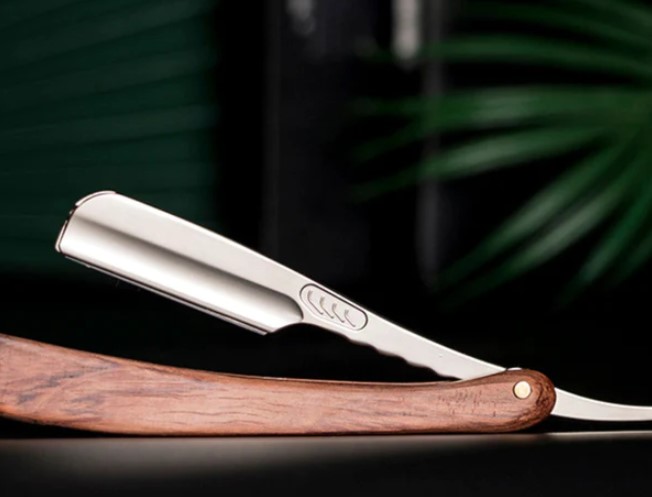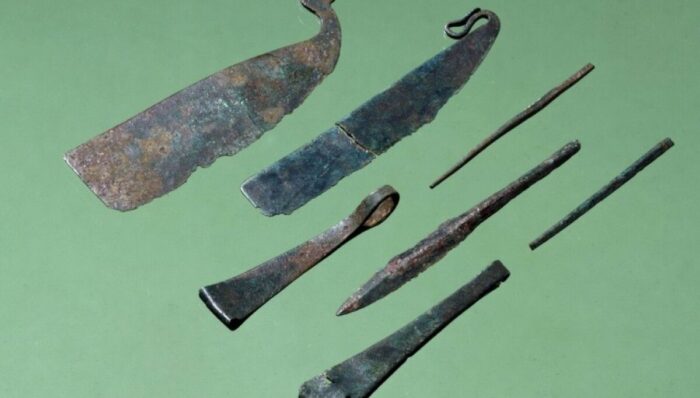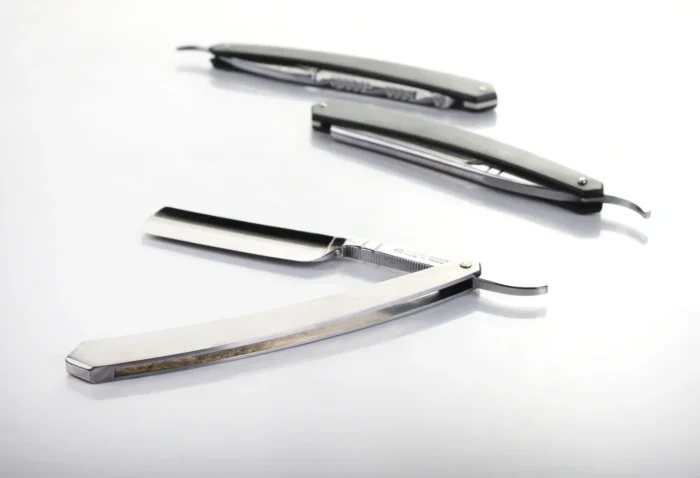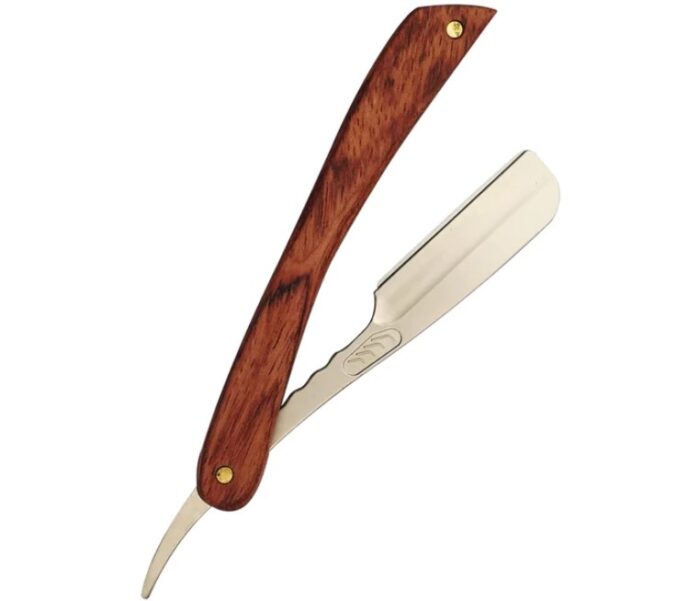
The World of Straight Razors
The straight razor, a timeless symbol of grooming elegance and efficiency, has a complex and fascinating history that transcends mere fashion trends. This iconic instrument has existed for hundreds of years, evolving through civilizations, technological innovations, and cultural shifts. The journey of the straight razor is, in many ways, a mirror reflecting broader human advancements in metallurgy, engineering, and aesthetics. In this comprehensive guide, we will embark on a historical tour that traces the evolution of the straight razor from its rudimentary beginnings to its modern-day renaissance.
Why does this history matter? Understanding the journey of the straight razor provides invaluable insights into the ever-changing dynamics of personal grooming. In a world increasingly focused on speed and convenience, the straight razor serves as a poignant reminder of an era where grooming was an art form, requiring skill, patience, and an appreciation for craftsmanship. Additionally, as we delve into the periods that shaped this tool, we also gain a greater understanding of the technological innovations and societal influences that have defined human progress.
Chuck, President of Saki Shears, a professional hair shears and straight razor company, provides a compelling perspective on the significance of understanding this history. “When we trace the lineage of straight razors,” Chuck notes, “we’re also uncovering the technological and cultural shifts that have guided human civilization over centuries. From the materials used to the designs preferred, each era’s straight razors tell a story that is deeply intertwined with broader historical narratives.”
This guide is structured to take you through various historical periods, focusing on the technological and cultural changes that influenced the design, functionality, and popularity of straight razors. We will discuss the early beginnings in ancient civilizations, the transformative impact of industrialization, the challenges presented by the 20th century, and finally, the tool’s modern-day resurgence.
The Early Beginnings ─ Bronze Age to Middle Ages

Long before the stainless steel blades we are familiar with today, humans were utilizing various materials for shaving and grooming. In the absence of metallurgy, the earliest humans had to make do with sharpened flint, shells, and even animal bones. These served as rudimentary cutting tools, albeit with limited efficiency and durability. It was only with the advent of the Bronze Age that the concept of a razor took a more recognizable form.
Bronze razors, made from an alloy of copper and tin, started appearing in various ancient civilizations. Archaeological evidence from Egypt and Mesopotamia shows that these early razors often had a simple design, typically a thin bronze plate with a handle. While they were certainly an improvement over their predecessors, bronze razors were prone to corrosion and lacked the sharpness and longevity we associate with modern razors.
The transition into the Iron Age marked another significant development. Iron, though still not as durable as the materials that would come later, offered a sharper edge and better longevity than bronze. The art of blacksmithing allowed for more sophisticated designs, including foldable blades and intricately decorated handles. During the time of the Roman Empire, the straight razor began to take a form that is more familiar to us today. Roman razors were often highly ornate, made of carefully crafted iron or steel and featuring intricate carvings and inlays. Ownership of such a razor was considered a sign of nobility and affluence, elevating the act of shaving from a mundane task to a status symbol.
Chuck, the President of Saki Shears, offers valuable context for understanding these early stages: “The evolution from primitive cutting tools to more refined razors reflects not just advancements in material science but also complex societal changes. In ancient Rome, for instance, grooming became a status symbol. The straight razor was not merely a tool; it was a marker of cultural and social standing.”
The straight razor’s journey from the Bronze Age to the Middle Ages was one of both technological and social evolution. Each advancement in materials and design reflected broader shifts in human capabilities and cultural values, setting the stage for the more dramatic transformations that would occur in later centuries.
Industrial Revolution ─ The Game Changer
The Industrial Revolution ushered in an era of unprecedented change, affecting nearly every aspect of human life. Its influence on the world of grooming and, more specifically, on the evolution of straight razors, cannot be overstated. Before industrialization, the production of razors was largely a manual process, carried out by skilled craftsmen. This labor-intensive method limited the availability and affordability of quality straight razors, which remained exclusive commodities for the affluent.
However, the advent of mass production techniques fundamentally changed this landscape. For the first time, razors could be produced on a large scale without significant compromises on quality. Factories equipped with state-of-the-art machinery were capable of turning out thousands of razors with a level of uniformity and precision that would have been unimaginable in previous eras. This democratization of production had far-reaching consequences: not only did it make razors more affordable, but it also opened the door to a host of innovations.
Chuck from Saki Shears elaborates on this turning point: “The Industrial Revolution was a milestone in the evolution of straight razors. The automation of manufacturing processes meant that quality razors could be produced en masse, making them accessible to a broader segment of the population. This influx of affordable options spurred innovations in design and engineering, setting the stage for the versatile and highly efficient razors we know today.”
Among the key innovations of this period was the introduction of the hollow grind, a technique that involves grinding a concave shape into the blade. This resulted in thinner, sharper blades that offered unparalleled cutting performance. The hollow grind became the industry standard, persisting to this day as a hallmark of quality straight razors. It was also during this period that we saw the introduction of different handle materials, such as celluloid and later, synthetic polymers, offering more options for customization and aesthetic appeal.
The Industrial Revolution was a watershed moment that transformed the straight razor from a luxury item to a widely accessible grooming essential. It revolutionized not just the way razors were made but also how they were perceived, changing the straight razor from a status symbol to a staple of men’s grooming.
The 20th Century ─ Rise of Safety Razors and the Decline of Straight Razors
The 20th century marked a period of accelerated change and innovation in various fields, and the shaving industry was no exception. The invention and popularization of safety razors and disposable blades brought about a sea change in men’s grooming habits. While these new tools promised speed, convenience, and a lower learning curve, they also led to a decline in the everyday use of straight razors.
In the early 1900s, safety razors came into vogue, touting the benefits of a quick and safe shave without the need for specialized skill. The mechanism was simple but effective, allowing even novices to achieve a close shave without the risk of severe cuts. Accompanied by aggressive marketing campaigns, safety razors quickly captured a large market share, relegating straight razors to the peripheries of mainstream grooming culture.
But did this shift signal the end of straight razors? Not at all. In fact, it created a specialized niche for enthusiasts and connoisseurs who revered the art of shaving with a straight razor. “The introduction of safety razors did pose a challenge,” acknowledges Chuck from Saki Shears, “but it also clarified the unique value proposition of straight razors. While safety razors catered to the masses, straight razors attracted a discerning clientele who appreciated the craftsmanship, the skill, and the ritual involved in using them.”
Throughout the latter half of the 20th century, straight razors became specialty items, cherished more for their artistry and the unparalleled quality of shave they provided than for their convenience. The onset of the disposable culture—where objects are used briefly and discarded—further emphasized the sustainable nature of straight razors. These tools could last a lifetime if properly maintained, standing in stark contrast to disposable razors that contribute to waste and environmental degradation.
So, despite challenges, straight razors didn’t fade into obscurity. Instead, they settled into a unique niche, catering to individuals who saw shaving not just as a daily chore, but as an art form, a ritual, and a nod to a bygone era of craftsmanship and elegance.
The Modern Resurgence and What Lies Ahead

In the age of electric shavers and multi-blade cartridges, one might assume that the straight razor would be relegated to museums or antique shops. However, the 21st century has seen a remarkable resurgence in the popularity of this classic grooming tool. A new generation of grooming enthusiasts is rediscovering the joys and intricacies of using a straight razor, buoyed by online communities, how-to videos, and a growing awareness of sustainable practices.
But what’s driving this revival? One factor is the renewed emphasis on sustainability and eco-conscious choices. Straight razors, being long-lasting and requiring only periodic sharpening, offer a waste-free alternative to disposable razors. They align well with the modern ethos of reducing environmental impact and championing sustainability.
Chuck from Saki Shears remarks, “The revival of straight razors is a testament to their enduring appeal and functionality. In a time when we’re reconsidering our consumption habits for the sake of sustainability, the straight razor stands out as a timeless and eco-friendly option. It’s not just a grooming tool; it’s a lifestyle statement.”
Moreover, the global community of grooming aficionados offers a wealth of knowledge and support to those interested in mastering the art of straight razor shaving. From online tutorials to specialized grooming products like artisanal shaving soaps and high-quality strops, there’s never been a better time to get into this age-old practice. It’s a burgeoning market that blends tradition with innovation, appealing to those who appreciate the nuanced skills and rituals that come with using a straight razor.
As we look to the future, it’s clear that the straight razor is here to stay, not as a relic of the past but as a tool that resonates with modern sensibilities. It’s a fascinating case of ‘what’s old is new again,’ highlighting the enduring appeal of well-crafted, functional, and sustainable tools.
The straight razor’s journey through history is a narrative rich with innovation, adaptation, and resurgence. From its early origins in ancient civilizations to its present-day revival, it serves as a compelling lens through which to view the broader currents of human progress and values.









